#...but i really want to see the manga storytelling. different mediums and pacing and all you know?
Note
Are u a bsd manga reader :D ??
Unfortunately, I am not. I might have time in a few months to sit down and read it (if so, I'll probably spam this poor and currently sleeping blog with rambling reactions/analyses because I can't control myself). Or, if I get too impatient, I'll probably just go what responsibilities? and read it anyway...
BUT. I have read all of Volume 20 and a few of the arcs that caught my eye, and they were REALLY fun.
#thank you for the ask anon! this was a pleasant thing to see getting on this here site#but yeah....itll def take a while for me to read the manga#i havent even caught up on season 4 yet.....#and during my time of exile my draft folder just keeps getting bigger and bigger....which is pain#but i wont lie this was kind of a flattering ask#like you ask me if i am a reader?? as if me being a reader of the manga is something you want to know about??#i get flattered by the strangest things XDD#also thank you to everyone who's following me and i feel a bit bad for gathering people when im on a semi-hiatus#but yeah i DEFINITELY have to read the manga. i have no hard feelings towards the anime...#...but i really want to see the manga storytelling. different mediums and pacing and all you know?#bsd#random fandom spamdom#spitting nonsense#and once again that you for the ask anon!
3 notes
·
View notes
Text
Digimon 02 survey! Part 7
Last poll of the survey!!! (If that makes sense.)
When tri. was released, many people confused with the fact that it was released in six movies, but given the structure of an episodic anime season, where pretty much all movies can be easily split in four or five parts of roughly 20 minutes each... which, some distributors did!
This means that some people watched tri. as it was originally released –that is, as a series of movies– and others watched it as a set of 26 episodes. There was some debate, especially at the beginning, about whether tri. should've been an episodic anime season or not, and whether the six movie format helped or hindered the story's pacing.
Also, it recently hit me that Digimon CD dramas are not really as niche as I thought, and actually have some fans that are very passionate about them with their storytelling style and usual tone.
And it's been proven time and time again, with titles like Survive and Cyber Sleuth, that Digimon games can certainly have a deeply moving, well written story as well.
Which leads me to this last question. While I do think that different kinds of stories benefit more from being told in one form or another, such as movies, series, manga or games, I feel like we still have different preferences, we want to see different things coming from Digimon, down to the medium through which its stories are told.
So, to wrap this imaginary 02 sequel up in a bow, which format or medium would you prefer for it?
I'll compile the survey's final results in one last post when they're ready, and also compare them with the Twitter version for good measure! Thank you all for participating!!
3 notes
·
View notes
Text
Pokemon Franchise Narrative Comparison
To this day, there have been only three other mediums that have run for as long as the core Pokemon game series has: the anime series, the Pokemon Adventures manga series, and the Trading Card Game. With the obvious exception of the TCG, these have all had narrative arcs within each passing generation, and I want to use this post to compare their quality.
GEN I
Games: Red/Blue/Green/Yellow
Anime: Original Series: Indigo League + Orange Islands (The Beginning)
Manga: Red/Blue/Green Chapter, Yellow Chapter
1st Place - Manga. The original R/B/G Chapter brings the world of the Game Boy games to life in stunning accuracy, while also its own spin on certain things and crafting a simple yet sophisticated coming-of-age narrative, with the Yellow Chapter being its Actionized Sequel that raises the stakes even higher and deepens everything within this manga series. Add to this clear influence from the anime and the fact that it’s the only Gen I product to feature the character of Green in it, and we have the definitive story for the franchise’s first generation.
2nd Place - Anime. While increasingly less faithful to the details of the games, the anime remained very faithful to the spirit of them while telling its own coming-of-age tale for Ash Ketchum in the Indigo League series, plus a “postgame scenario” equivalent with the Orange Islands series. The highlight of this story is definitely how it fleshes out the games’ main antagonists: Gary Oak, Team Rocket and Mewtwo, into interesting, memorable characters.
3rd Place - Games. The 8-bit adventure that started it all is incredibly bare-bones and basic: take the Pokemon League challenge, thwart the evil Team Rocket along the way, and if possible fill up that Pokedex with all 151 Pokemon (”Gotta Catch ‘Em All!”). As a story, it’s not very interesting, but as an excuse for gameplay it works marvelously and established a winning formula for the series, and to this day it’s still charming in its wholesome simplicity.
GEN II
Games: Gold/Silver/Crystal
Anime: Original Series: GS (Gold and Silver)
Manga: Gold/Silver/Crystal Chapter
1st Place - Manga. It’s funny - in the first volume of the G/S/C Chapter, things seemed to be a definite downgrade from the Kanto-based arcs that came before in terms of artwork, characterization and narrative. But then the mysterious masked antagonist appears at the end, and from then on out things just keep escalating to such epic heights that it becomes the best Johto story in the franchise and arguably the best arc in the whole manga series! Practically everyone and everything from the previous two arcs end up joining up with the new elements and the series up to this point is brought to a satisfying, conclusive note.
2nd Place - Games. While the League challenge and Pokedex narrative threads are basically the same as before, and the Team Rocket thread is actually weaker, this story also features a stronger regional setting, a stronger rival, and stronger characterization for side characters both old and new, especially in the special edition, Crystal, making it a welcome step-up.
3rd Place - Anime. An attempt at a new narrative was notoriously abandoned early on, with Takeshi Shudo leaving the head writer position and the whole show devolving into formulaic Filler Hell. While the Johto League tournament that concluded the whole thing was good, there was barely a story to support getting there, and the main characters had all become Flanderized versions of their former selves by the end. Without question, the anime had jumped the shark. But Shudo did give us the best movie and an OVA that properly concluded Indigo League’s Mewtwo arc before he was through, so let’s not say it was a total waste.
GEN III
Games: Ruby/Sapphire/Emerald, FireRed/LeafGreen
Anime: Advanced Generation (Ruby and Sapphire)
Manga: Ruby/Sapphire Chapter, FireRed/LeafGreen Chapter, Emerald Chapter
1st Place - Games. The first time that the games get first place, but only on the technicality that the other contenders are worse, since this really isn’t that big an improvement over the previous two generations’ game narratives. The biggest difference is that your character is the child of one of the Gym Leaders, and the evil team narrative thread (Team Aqua and/or Team Magma this time) builds to an epic high-stakes event that involves the Legendary Pokemon mascot of the game which will become a mainstay of the formula from now on. There is also the remakes of the original Gen I games, and aside from some small tweaks of improvement and a postgame scenario in an island archipelago (anime-inspired, perhaps?), the narrative is basically the same as it was before. Nothing outstanding, but serviceable.
2nd Place - Manga. Talk about a mixed bag...the R/S Chapter started out with promise but ended up going to shit in its second half, the FR/LG Chapter was fantastic only to conclude with a bullshit last-minute cliffhanger, and the Emerald Chapter that connects the two arcs is just stereotypical, badly-written shonen crap with only a few good elements in it (plus some ironic enjoyment to be had in its batshit insane climax). On the whole, this was the weakest period that the manga series has ever had, despite Kusaka and Yamamoto’s best efforts.
3rd Place - Anime. Beyond May and her character arc which, by some lucky fluke, came together wonderfully, the anime hadn’t improved that much from the Johto days. Hoenn was not done any justice (even the manga did a better job with it!), and the FRLG/Emerald composite for the filler arc afterward was just weird in spite of how entertaining half of it was. All in all, the anime hadn’t gotten a real narrative back. It was just going through the motions.
GEN IV
Games: Diamond/Pearl/Platinum, HeartGold/SoulSilver
Anime: Diamond & Pearl
Manga: Diamond/Pearl Chapter, Platinum Chapter, HeartGold/SoulSilver Chapter
1st Place - Manga. Pokemon Adventures retakes its crown in this generation, with a phenomental two arcs in the Sinnoh region that are so linked that they essentially make up one whole story, and a brief, adequate arc in Johto that properly bridges the gap between those Sinnoh arcs and the Emerald arc before them. Whenever I think of Sinnoh, it’s the region portrayed in this manga that comes to mind, which is a testament to its high quality.
2nd Place - Games. One word can describe the narratives of these games: overcooked. There are a lot of good ingredients here that elevate the series’ storytelling to a new level, but way too many cooks who don’t have a unified idea of how to properly mix them together means that it becomes a muddled mess of mythology, philosophy and vague character motivations. This particularly pisses me off when it effects the otherwise solid Gen II remakes. However, the good elements are still good regardless, and as showcased by the following generation this was a necessary learning curve to get through, so it deserves some respect.
3rd Place - Anime. Ugh. Newly appointed head writer Atsuhiro Tomioka tries to have his cake and eat it too here, maintaining the anime’s banal filler formula while also attempting to tell a legitimate narrative, but he as just one man somehow manages to clutter up that narrative more than the several writers did for the games in this generation! It is an increasingly insufferable roller coaster of plot threads and supposed character arcs that are drawn out to the point of disinterest across four years, with you really feeling the disastrous pace when it takes a years’ worth of time between Ash winning his 7th badge and him winning his 8th. Combine this with the source material of the games being disrespected or cast aside perhaps worse than ever, and you get what I will always believe is the lowest point for the anime.
GEN V
Games: Black/White, Black 2/White 2
Anime: Best Wishes + Best Wishes Season 2 (Black and White)
Manga: Black/White Chapter, Black 2/White 2 Chapter
1st Place - Games. With this generation, particularly with its first set of games, the learning curve undergone in Gen IV paid off. This is quite possibly the richest narrative in the whole game series in terms of plot, characterization and themes, and the peak of the traditional formula. Combined with stellar gameplay, it creates a high point that has yet to be matched.
2nd Place - Manga. The Black/White Chapter had a rough start, just copying the games’ plot almost to the letter but with the characterizations for the main characters truly being less than ideal (see what I did there?) However, once Black and White go their own separate ways the arc starts rapidly improving until it ends on a phenomenal high note that segues perfectly in the Black 2/White 2 arc that, like the Yellow arc, is an Actionized Sequel and, like the Platinum arc, is essentially the continuation and conclusion of the same story as in the previous arc. The only real mark against it is that it can be too fast-paced which only adds to the frustrating irony of the absolutely Hellish schedule slip it underwent (8 fucking years for an arc of just 24 chapters / 3 volumes to be completed! It’s never going to live that fact down!)
3rd Place - Anime. Kind of the reverse of the manga: had a great start being the best that the anime has been in a long time, only to get progressively weaker, with the third and final year being a trainwreck of checking off plot points in a mad rush to promote the upcoming Gen VI and pander to the whiny fanboys who’d been complaining about the loss of the formula and D/P-style story writing (yes, they actually liked those) plus the “soft reboot” aspect going on, particularly with Ash. However, much like the Gen IV games, the Gen V anime proved to be a necessary learning curve for the future and is a highly impactful series in that regard, so it deserves respect for that (although I hate that both a natural disaster and the B2/W2 games screwed up the originally planned Team Plasma arc! It’s never going to live that fact down!)
GEN VI
Games: X/Y, Omega Ruby/Alpha Sapphire
Anime: XY + XY&Z
Manga: X/Y Chapter, Omega Ruby/Alpha Sapphire Chapter
1st Place - Manga. I thoroughly dislike the story of the X/Y games and the Delta Episode of OR/AS, so imagine my surprise when Pokemon Adventures actually makes something good out of them (or, in the Delta Episode’s case, something tolerable at best). The X/Y Chapter is a delightful deconstruction of a lot of what’s in the games, turning what was light and fluffy and hollow into something dark and suspenseful and meaningful. And the OR/AS Chapter gets points for being the best that Ruby and Sapphire have ever been characterized, to the point where they’ve been officially Rescued from my Scrappy Heap (Emerald’s still lame tho).
2nd Place - Games. Like I said, I dislike the X/Y games’ narrative and the Delta Episode of OR/AS; I think they are the worst writing the game series has ever seen to date. But the main narrative of OR/AS - the actual remake of the Gen III games which features a lot of new and necessary improvements - is solid, and that’s enough to put the games at second place here.
3rd Place - Anime. Similarly, the one thing the anime series does really well - the Myth Arc, which includes the Team Flare storyline - is not enough to elevate it beyond third place, because the rest of the series’ narrative is just as lame as the X/Y games’, there’s not much benefit from OR/AS elements, and everything that it positions in its shameful fan-pandering utterly fails to deliver or add up to anything meaningful in the end. The Mega Evolution specials pretty clearly demonstrate that this should have been Alain’s show, not Ash’s.
GEN VII
Games: Sun/Moon/Ultra Sun/Ultra Moon
Anime: Sun & Moon
Manga: Sun/Moon/Ultra Sun/Ultra Moon Chapter
1st Place - Games. The Gen V games have serious competition story-wise with the Gen VII games. Both S/M and US/UM are excellent, with things not done so well in one being done better in the other and vice-versa to the point where they compliment each other beautifully.
2nd Place - Anime. Miracle of miracles! For the first time since Gen I, the anime series gets its narrative in second place, with Daiki Tomiyasu and Aya Matsui completely reinventing it in a refreshingly fun and vibrant way. There are some missed opportunities here and there, but overall it’s a perfect adaptation of the Alola region and everything that makes it so great.
3rd Place - Manga. While this is still an arc of good quality that I like, it’s also perhaps the most disappointing since Ruby/Sapphire back in Gen III. After doing so well with Sinnoh, Unova and Kalos, one senses that Kusaka and Yamamoto struggled to adapt Alola to that same standard, and while the decision to keep US/UM as part of the same arc rather than be a separate one was wise, it’s during the US/UM half of the arc that things really start falling apart and the wasted potential of stuff that got set up earlier becomes overbearing. It doesn’t help that the leads are an unlikable hero with an interesting, relatable goal and a likable heroine with an uninteresting, unrelatable goal respectively. Let’s hope that the patchwork done in the volume releases fixes some of the problems so that I can like this arc even more.
GEN VIII
Games: Sword/Shield
Anime: New Series (Journeys)
Manga: Sword/Shield Chapter
1st Place - Manga. As I recently stated, Kusaka and Yamamoto are back at their A-Game with this arc, taking advantage of all that was lacking in the games’ story and utilizing them in an interesting narrative that I can’t wait to further experience alongside our surrogate, Marvin.
2nd Place - Games. If the Gen IV games’ narrative was overcooked, then the narrative of the games four generations later is most definitely undercooked. It’s not the worst story - that’s still Gen VI - but it’s possibly the most disappointing since it’s so easy to see how it could have been better and you are left baffled as to why the writers didn’t go in that direction.
3rd Place - Anime. This series is highly enjoyable thanks to the continued leadership of Daiki Tomiyasu, but not only is there not as much of a narrative as there’s been in earlier shows, it isn’t even uniquely Gen VIII-based: taking place across all regions in the Pokemon World and taking influence from mobile games like Go (released in Gen VI) and Masters (released in Gen VII). Add to that the unfortunate hiatus it’s now on and it can’t help but be placed last.
11 notes
·
View notes
Text
pet - A beautiful and tense journey through the peaks and valleys of memories
Winter 2020, Geno Studio - 7/10
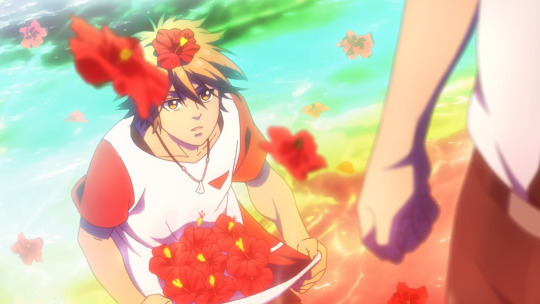
Hiroki appreciates the idyllic imagery of the landscape of memories
This season has been bountiful for me and pet was one of the main contributors to this success. Despite my avoidance of tense and emotionally exhausting topics, going through pet was easy. First and foremost, pet was a champ in the department of visual storytelling and I expected nothing less from my favorite director Oomori Takahiro. Whilst I don’t always fall in love with all the stories he adapts into anime, I know that he will never make a show that underestimates its audience and that the story will always have heart. And pet didn’t disappoint.
The main attraction of the show for me is the depth of emotion and the psychological struggles it portrays in characters I actually care about. Of the main foursome, Hiroki was an immediate favourite with his sweet, naive and just nature, followed by an interest in his “boyfriend” Tsukasa, mostly because of the creepiness he exuded but also because he still wasn’t unlikeable - he did really care for Hiroki. Their relationship, of course, was a big draw in itself - immediately intimate and full of innuendo, much like the rest of the narrative around the co-dependency between image users who give and receive peaks from each other (peaks represent the best memory that make up the entire psyche of a human being.) This almost surface-level subtext never disappointed despite all the drama surrounding each other’s value in each of these four characters.
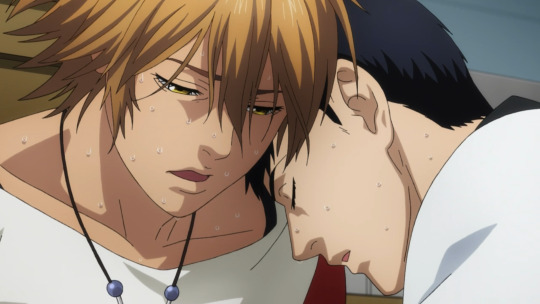
I’m not one to say no to an intense bout of connecting in memories.
In some cases the relationship drama made me sad - because why couldn’t Hayashi prioritise Tsukasa? Why was it always Satoru who came first? It gave me a dark pleasure in some - Tsukasa’s intense need for Hiroki to be with him drowned out his need for Hiroki to be okay. He just needed him around no matter what. In others, it made me stray away from the emotional core a bit - who cares about this supernatural Chinese mafia and their politics? I’m not one for the gangster stories. I need beauty and elegance in my crimes rather than grit. I was also a bit suspicious about the extremely over-the-top vibe in some dramatic scenes. Tsukasa confronting Hayashi felt almost hammed up to me.
At the end of it all, pet delivered a finale that made the uninteresting bits suddenly interesting and made the interesting but confusing bits all the more deep. A lot of the drama was actually caused by the limited emotional capacity of these four, who had a different developmental period than normal people. They couldn’t create their own memories and they didn’t feel their own emotions until someone else came to save them. The nicer, more naive and newer pets like Hiroki and Satoru felt exactly like that - pets. They were not treated as equals and were clearly tricked into all sorts of situations they didn’t want to be in. More importantly, they didn’t even want to think, they didn’t know how to form their own opinions, but despite the lack of basics in emotions, they still grew those. It was easier to see that they were indeed limited in their capacity to not feel (because they felt a GREAT deal) but in their capacity to make sense of it and control it.
The older, cleverer characters like Hayashi and Tsukasa looked well-adjusted on the surface until past halfway, where we could see the cracks in their armor. Hayashi prioritised his younger “child” Satoru, not because he didn’t love Tsukasa but because he thought Tsukasa could have been a lost cause in the hands of the Company, whereas he had been able to take care of Satoru till recently. Thinking back on it, this fact didn’t make me feel relieved for Tsukasa because in the end he was relegated to a secondary position, but it made sense. Hayashi was not cruel, he only had the capacity to prioritize one particular feeling (or person in this case.) He had even thought of Hiroki and wanted to bring him out despite not even having met him but more than anything he had to get Satoru out.

Hayashi’s protective feelings for Tsukasa were more hurtful than warm. After all, he was always the “too.”
Tsukasa, himself, was acting in a lot of scenes but this was not true for all scenes where he was emotional - despite giving the impression. The confrontation scene with Hayashi was as hammed up as the scene where he was putting on a performance for Satoru, but the truth is he was just unable to express himself in a way that was genuine. His emotional baggage was of course far bigger than this. After all, he even groomed himself a perfect pet after he was betrayed by his peak giver. He wanted someone to trust and he could only trust someone who would be on his side unconditionally. His actions (and thoughts) made it obvious that he didn’t see Hiroki as an equal, but the question is was that also his feelings? If anything, Hiroki (and Hayashi) were put on a pedestal and he could not live without them. However, he didn’t really understand how to go about keeping them without thinking about himself first. He had been self-centered for so long that it was impossible to think of anything other than himself. He’d never learnt to.

Tsukasa’s perfect world.
And the Company - I didn’t care about this plotline until the last episode where the connection between Katsuragi and LianLian was revealed. And what a way to end it! Suddenly I was emotionally connected to the evil goon, doing the bidding of his superiors and nothing else the whole season (and he had no gay storyline to boot, so a tough sell for me :)).
The sad ending was coming from miles away - but pet also surprised me in that regard. The ending could be viewed in two different ways. The source material had been a completed manga for a long time until recently, in which case, it looked like the “stupid” ending of the naive pets, looking optimistically into the future, never likely to have what they want. We do now know that a sequel is starting that focuses on the lives of Tsukasa, Hiroki and Satoru after this point, and I, for one, am excited to see a somewhat happy follow-up to this tense but strangely sweet psychological drama. We might end up finding out about more rules surrounding how memories and images work (though that plot itself is not necessarily my main concern.) And who knows? Maybe Hiroki and Satoru will really bring Tsukasa to their peak and Tsukasa will relearn how to make memories and they will live happily ever after. A girl can dream... Though I still must add, the conclusion is a perfect one as it is, not entirely sad, but really just two fool’s dream that we can also choose to believe in.

The peak that bestows hope on all who is destitute
Putting aside the story elements, the show itself is crafted superbly both visually and narratively. The imagery was almost never outright explained but always visible and giving a pleasant rush to me when I noticed them.

Don’t kill the innocent pets! They understand nothing about the evils of the world they live in.
The dissonance between thoughts, feelings and actions of the childish but equally deep main four was showcased well in all dialogues, but especially in the confrontation scene between Tsukasa and Satoru in episode 12. Both characters didn’t suspect they were wrong despite both of them being half-wrong. The pacing of the dialogue allowed both their thoughts and actual words to be conveyed but also showed us in great detail how underdeveloped they were emotionally. Their understanding of those external to them was somewhat complex, it’s not like any normally raised human being can figure out all the things that were happening in that situation, so it was realistic that they wouldn’t understand it all. More importantly, their self-awareness levels were way below the threshold that would allow them to flourish in a cruel environment, surrounded by people who were hellbent on taking advantage of them and seeing them merely as pets. It made for a fascinating watch - the cleverness of it all was the depth of the characters who I’d classify as idiots in a lot of ways. As someone who very rarely enjoys idiot characters, I’d call this experience an orgasmic pleasure.
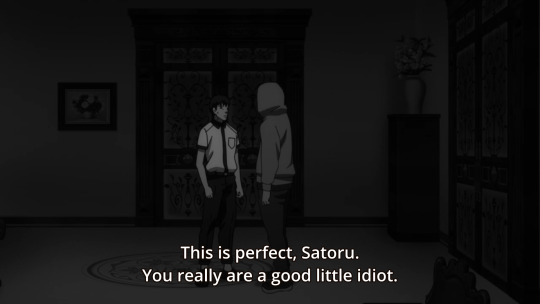
Takes one to know one.
One last word about Ueda Keisuke, the seiyuu of Hiroki. The genuineness and sweetness portrayed in the character hugely owed to the great voice work of the actor. I had heard him in Oushitsu Kyoushi Heine before as the titular character Heine and noticed his distinct tones, but hadn’t felt anything beyond that. Hiroki’s performance, however, affected me to my core. Looking back on Heine now, I really appreciate the sense of distinctiveness he can grant the characters he plays. Heine was not an attractive character for me, so I didn’t care at the time as his voice fit him perfectly - it was not particularly attractive. With Hiroki, he put on a performance with a completely different range of emotions that retrospectively, I can put Heine together with Hiroki, and see what a great voice actor he is. Here’s hoping for more roles for Ueda in the future! (Apparently he is a stage actor as well, but selfishly, I hope he becomes a full time seiyuu.)
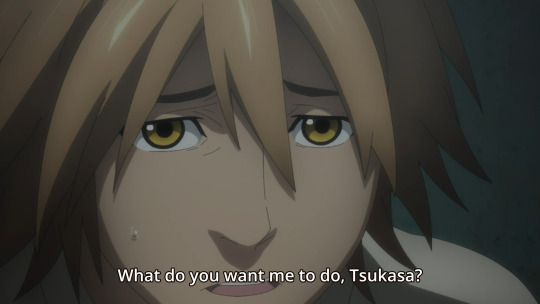
Ask me again in that voice, you sweet little child.
The overall tension and the focus on two young men and their relationship, in addition to the matter of their survival within a gangster world remind me of Banana Fish but I must caveat that I intensely dislike BF for failing to do all the things pet did perfectly - from a genuine relationship and real characters other than the very main character, tragedy as a harrowing storytelling medium rather than the sake of having it there (and without respite,) drama that is not cheesy despite being over-the-top in places (with good reason) and imagery that served the narrative which closed the loop, without leaving any threads untouched.
As the pull of the show is the emotional co-dependency between the male cast for me, I have a hard time narrowing down my actual recommendations for pet. There are so many of them, and they are not necessarily similar to the show in other respects. I will name a few of my favorites here if you are up for gay love/obsession as a theme in tense, non-romantic anime, with characters who aren’t quite in touch with their emotions: Shigurui, Saraiya Goyou, Kenpuu Denki Berserk, and 91 Days might do the trick. Let me know your thoughts!
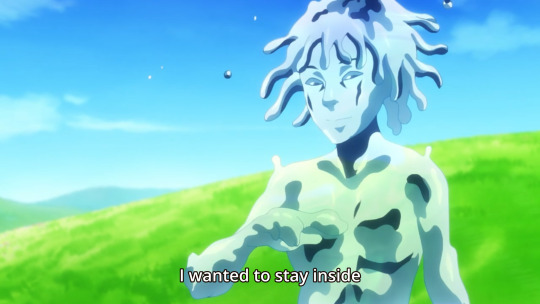
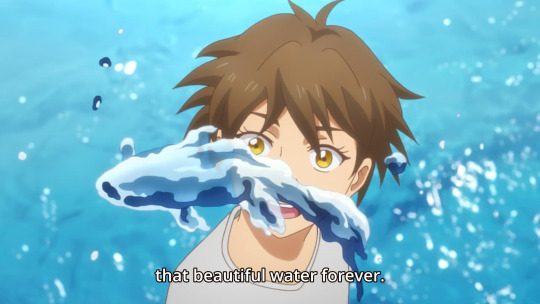
5 notes
·
View notes
Note
The anime adaptation sucked for a number of reasons but the music? Mwah
Oh yeah, I did not like the anime for Kagepro at all, tbh. Right after the show concluded, I made a long post about how I thought the show could have been adapted into a longer, 2 cour season which explored the multiple routes, because I was very disappointed. As a long time Kagepro fan, I was infuriated by how things like Otsukimi Recital (one of my favorite songs) seemed to be crammed into the show at the last minute and to this day I still don’t quite understand exactly what happened with Momo and Kido combining their powers in that episode, but after talking with a few people in a (now deleted) Kagepro discord server and watching Bread Box on Youtube talk about the series as a whole across multiple video essays, I’ve become more at peace with it.
Read more just for me rambling with no cohesiveness about the series:
Kagerou Project, since the beginning, was a complicated way of story telling. I have never had the patience to sit down and read the light novels completely, but I know what happens in them from people discussing them a lot. But, the songs, as a starter, are honestly the best medium for telling Kagepro’s story, because they cover all the routes. Lost Time Memory? We learn about route 1 and route xx. Outer Science and Summertime Record? Part of what made their plot points some impactful was not only were they the two different endings to the story, the way the MVs were released allowed us to be tricked into thinking Outer Science was the final MV we would get and then only 3-4 days later we got to see all our kids grown up and happy and thriving, and the fandom cried.
I’ve always been fascinated with series that derive from Vocaloid works, because from a meta narrative standpoint, it’s amazing to see how the creators and the method of storytelling evolved. I’m sort of all over the place right now with my points, but I love Kagepro as a song series because it used its music videos and music to tell a story with crazy things like parallel universe and reseting time and good and bad endings in a way I would normally see in a video game. Jin and Sidu and Wannyanpuu, you can see how not only does the music and the story its telling improve (from the vagueness of Jinzou Enemy with Ene being a Miku rip-off, because we had already gotten several songs from the Vocaloid community about the persona of the artificial voice watching its creator) move on to more diversely animated videos with unique character designs that tell us about how a character sacrifices herself for her family, how two different selves of one person die and survive in different timelines, and how one route has to happen for the good route to exist.
I agree with you that the anime did well because of the music. But that’s because for those of us who was connected to the music series already, those little easter eggs were the only thing really drawing us in. We were hoping to see our favorite song animated completely, animated and fit into a part of the plot we weren’t exactly sure it aligned with. Right now, I feel like Kagepro the series is a mess with the manga having almost a neutral ending, the novels ending but Jin writing more, the anime being the good end but poorly explained. Like I said, I’d being lying if I found it to not be perhaps the worst and most rushed and chaotic adaption of the series, but like I said, part of Kagepro is the journey, and so for me, just hearing Jin finally leave behind the Vocaloid voice and sing the happy ending for his own project for the first time, of course I’m going to get emotional because I saw my kids happy, it was messy and it was rushed and the studio prioritized another anime project in the studio than MCA, but I still cried because everything at the end was happy. I actually agree with a few people but Shaft is the best studio to do Mekakucity Reload, because Shaft is the best at crazy time stories and does the flat coloring and monochromatic style of Sidu the best. (You wouldn’t want Kagepro to go to A-1 or KyoAni, who gloss up their series with sparkles or in A-1′s case, can have a quality dip later on in the show). I think if Shaft is the studio for Reload, in order to make it successful, they need to be working on only that at the time. They aren’t like Bones who have several studios inside them that are dedicated to a few animes that come out consistently. Shaft needs to completely rethink the pacing of Reload, focus less on the jokes of the show and more on the plot, maybe even rearrange how the story is presented to us (maybe introduce us to the bad end first? Have the terrorist attack happen midway into episode 1 or even then end of it? Show at least one route where Kuroha kills everyone, so Summertime Record is angsty and happy-sad because we understand the timeloops)
TLDR cause I’m already drained from this: Most anime are made to promote manga sales. Shaft put less care into MCA and was banking on people watching for the songs. We don’t need the songs in the anime. We don’t need music videos. We need the plot, like the manga or the light novels deliver. The song series was a way to convey the plot. Reload needs to convey the plot as an anime, and the studio needs to care and give it a bigger budget. I can live with a crazy broken neck head tilt every five seconds if it means we get all of that in exchange.
14 notes
·
View notes
Text
Regarding the problematic dilemma that is SnA’s eight episode
“The source of every crime, is some defect of the understanding; or some error in reasoning; or some sudden force of the passions.”
― Thomas Hobbes
..Okay, so, here I am again with a long-ass critic post about Shoukoku no Altair’s anime release. Yes. It has been a while and the anime had long ended. I know. Maybe some of you would say that roasting the anime again after all of this time is moot point, since it’s less likely that many people will come and search for it as it’s already out of season. But then again... compulsory community service in the middle of holiday time unfortunately can’t manage to shift my saltiness towards SnA anime, and once again I decided to resume doing this review that I initially thought I would abandon at the pilot episode.
Whew. Okay then, OOT rant out, now time for some content.
Warning: Spoilers, as usual. Also, quite more opinionated than the first review. Differing opinions are welcome, but please relay it with class.
Maybe some of you would be surprised when this particular episode became the next choice for my reluctant SnA anime bashing session: after all, compared to the other ones, this one is quite tame and consistent in regards to pacing, nothing out of ordinary as it was basically adapted from the interlude-type story of 4th volume of the manga. No sloppy scene cuts and merge like the ones littering the pilot episode, the seiyuus’ expertise shining through their well-executed lines delivered with emotive and fitting voice acting, fairly decent editing for supposedly dynamic scenes like Mahmut’s gambling parade (though a dark glittery effect and Katou-sensei used in the manga would make it 100X more awesome, as it added to Manga!Mahmut’s rightfully conspiratory look when he swindled the bar patrons’ money), the smoothness of it would not give the impression of another episode that messed up so bad that it needed a bashing post of its own.
Except that that was apparently not the case. As with most of its notable adaptations recently, there is a disturbing theme that repeats itself across some of Mappa’s recent adaptation works: For some god-knows-why reason, Mappa reeeally likes to change some aspect of the story, so that it diverges from the original source material and transform the show’s overall tone. This, in my opinion, is a kind of hit-or-miss situation; when it’s done well, it can make the story even more interesting and/or bringing out a kind of freshness to it, but when done poorly, it can destroy it into barely recognizable piece of... whatever it is instead.
Two of the most apparent examples of this theme is how Mappa did Dororo and Kakegurui’s anime adaptation. In Dororo, the important, plot-relevant differences shown since the beginning created a darker story that has a whole unique and interesting nuance compared to the more lighthearted original source. Meanwhile, in Kakegurui, in which the noisy, fanservice-laden changes only happened at the very end of the season, it felt abrupt and destroyed the tension that had been building since the first episode. For me, it gave an anti-climatic impression like the ending was written from a completely different story altogether and just slapped on the rest of the season like some kind of poorly made band-aid.
Apparently, it turns out that SnA anime also followed (or maybe some would say preceded, as it was aired even before Mappa!Dororo and aired together with Kakegurui) the same trend. To some extent. Here I see that SnA anime, as I had written about in the pilot episode critique, had changed some components of the story, in which the change didn’t really stem from technicalities and more of an artistic license to change the story’s overall tone. The problem is, the way that the anime changed scenes here and there is not consistent and overall not suited to the kind of story SnA is trying to tell us: the anime tried to somehow mix an image of Mahmut as a righteous, morally superior protagonist that always thrive in his every impulsive, ego-driven endeavors with a particular shape of world- building that centers on realpolitik-esque international politics, in which the highest reward would go to the actor that appeals the most to pragmatic rationality in ensuring their goal’s attainment. In this work, this mostly meant the characters’ goals regarding the wellbeing of their respective nations (i.e. national interest). In other words, the anime tried to blend two things that was supposedly not put together, and somehow tried to make it work. This made the overall tone inconsistent, as the anime was not clear on what kind of message it wanted to tell us.
This flaw was, in my opinion, most apparent in this particular episode. Why, you ask?
Because of this sly, sly, fabulous piece of work.
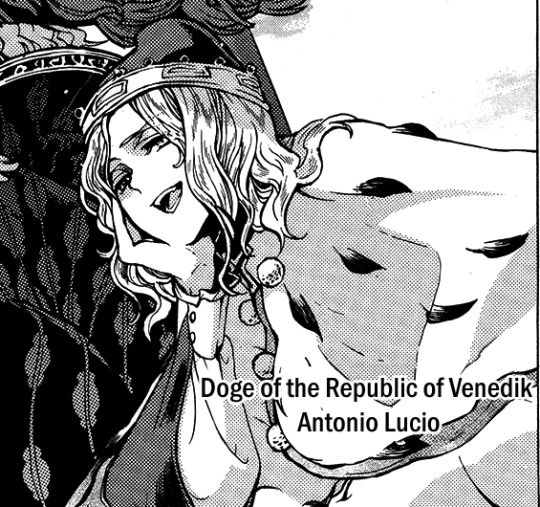
As some of you might already know, this magnificent bastard of a doge above is one of the, if not THE one, most pragmatic character SnA had to offer. Even more Machiavellian than other magnificent bastards such as Zaganos and Louis that has their own momentary emotion-controlled decision resulting in abject barbarism, Lucio for the most part managed to keep his underlying human emotions to himself, dividing his emotions as a human being with his rationality as a statesman with such surgical precision that even some of us sometimes forgot that he, like all other characters in the series, still has a heart underneath all of that smug diplomatic farce of his.
On one side the manga showcased his ability to create carefully balanced moves, crafted in order to maximize his city-state’s gain as a middle power with decent defensive capabilities and flourishing economy, but otherwise not immune to the effects of Turkiye and Baltrhein’s power struggle that reverberated throughout the region.
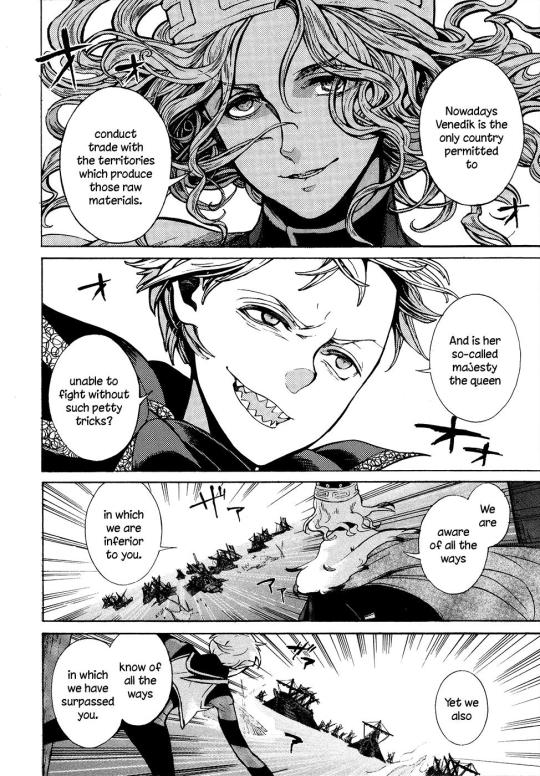

On the other hand, the manga also explored his inner, more vurnerable moments through carefully placed flashbacks and delicate showcase of blink-and-you’ll-miss micro-expression from time to time, creating a subtle nuance of conflicting desires in his mind that never truly surfaced for the whole world to see, painstakingly contained lest it becomes a crack that will rupture the delicate balance of his conscience and affect his decision-making abilities.

This two images of Lucio that the manga expertly portrayed, to me, is a good crystalization of the implicit rules of pragmatism present in the SnA universe already mentioned above. The ‘rewards’ for his ideal behaviour are readily apparent throughout the storyline, up until now. Venedik, the city-state that Lucio currently leads, always occupies ‘safe zone’ in the manga’s plot progression: it never suffered a crippling destruction that robs it of its sovereignty (compare to Phoenicia and some of Rumeliana mainland’s city states); haven’t experienced the kind of back-and-forth win-and-losses that causes drastic depletion of its resources (compare to Baltrhein that lost a lot of human and material resources along with their territories, and Turkiye that also lost a lot of human resources, intellectual properties, and arguably their subjects’ trust); and last but not least, it is able to participate actively, according to its own terms, in securing its interest throughout the great war that engulfes the entire region (somewhat of a luxury, certainly not possessed by the Cuore that depends on the Alliance to conclude the war in favorable terms for them).
In my opinion, those advantages that Venedik has would not be there without Lucio’s careful and logic-driven way of directing Venedik’s domestic and foreign affairs and masterful management of his personal sentiments. This is especially apparent when we compare Lucio with other policy makers in the story, that more often than not commited grave errors when they let their personal sentiments cloud their judgement (Mahmut’s impatience to save Ibrahim regardless of his position that led to his demotion in the story’s early stages; Zaganos’ thirst for revenge that led to many unnecessary sacrifices in recent chapters; Constantinos’ pride that led to Phoenicia’s harsh subjugation by Lerederik’s troops; Louis’ apparent prejudice at other other states that emptied Baltrhein’s coffers to fund a costly war, et cetera). The message is quite clear: as a statesman/woman, it’s imperative to separate one’s personal sentiments from his/her job as clean as possible; or else he/she will suffer grave consequences as a result; it doesn’t care what kind of personal morality or quirks you have, it decides that you’re finished when you let them dictate your actions (although still, being shonen manga, Mahmut as the protagonist still gets more ‘redemption’ than most...). Despite it being a value that is somewhat a bit foreign and outdated in manga world, (especially when considering the modern world’s worship of Romanticism and animanga’s reputation as one of the most expressive medium of storytelling), this subtle nuance is what separates SnA from another works in the same medium, even the ones with the same umbrella genre of historical fiction.
It’s this whole nuance that the anime failed to capture in its entirety, thus creating an underwhelmingly generic show of shonen adventure that moves because of Hero vs. Villain plot based on black-and-white morality. The drastic change they did to Lucio’s character, the character that I thought of as the ‘It’ standard of the manga’s reward-and-punishment system, presented this error clearer especially when combined with their hideous portrayal of Mahmut throughout the series already realized by a lot of other manga reader. In the anime, I didn’t see the realpolitik-savvy, confidently prudent Doge that I know and admire. In here, I saw a man so insecure about his own political inclinations that his most trusted subordinate deliberately hid a crucial intel in anticipation of an error in his judgement.
As this is already quite long, here are some screenshots to ponder on. Go figure.
Manga:
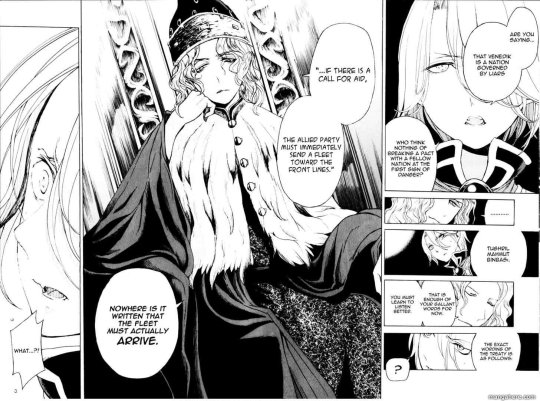

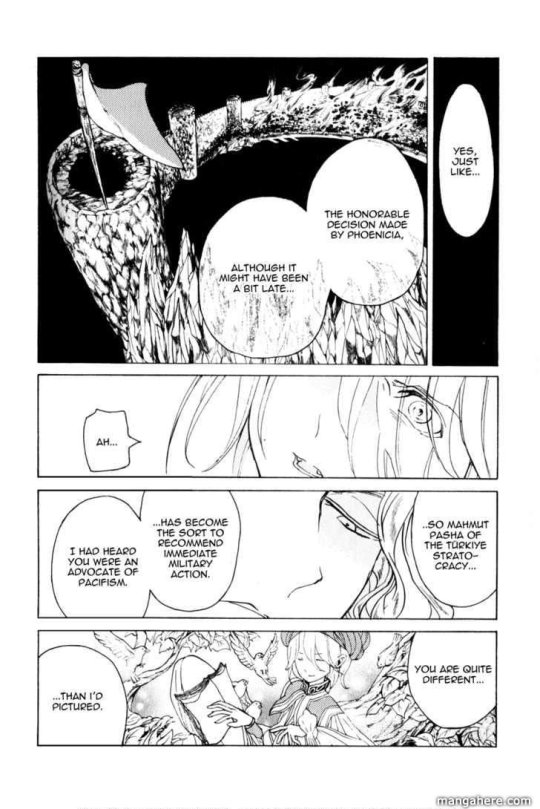
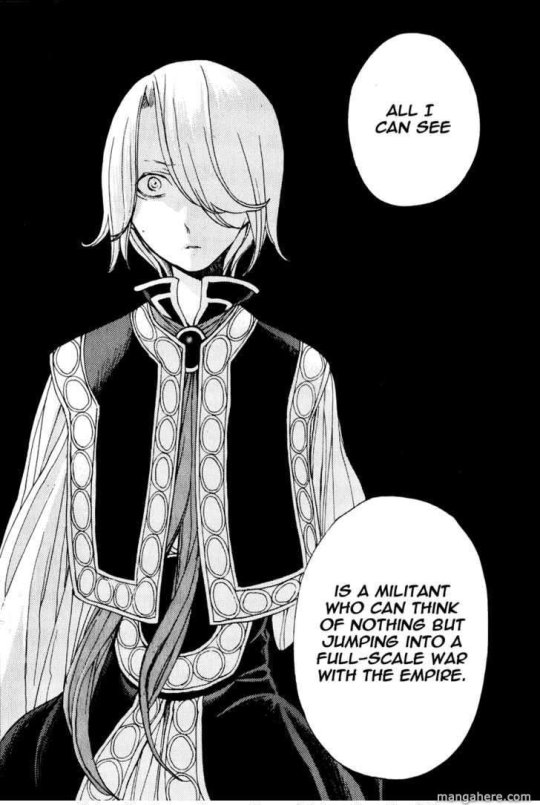
An elaborate, brilliant piece of roasting that we never knew we needed, yet the anime never gives
Anime:
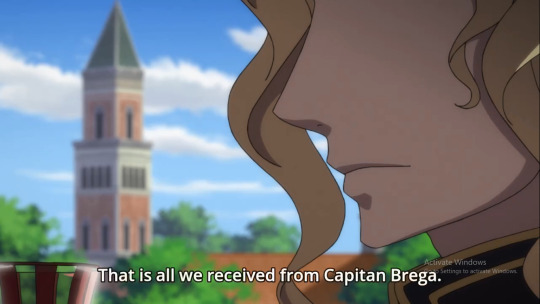
Seriously? That’s all?? How about.. the Magistros’ death?

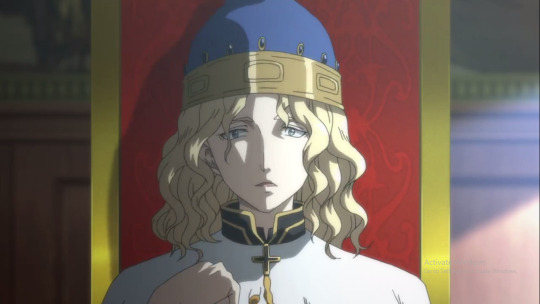
Totally blindsided by an unanticipated jab on your personal sentiments thanks to some missing intels, possibly showing your weakness and incompetence in front of foreign politicians and your own subordinates. Fun indeed.


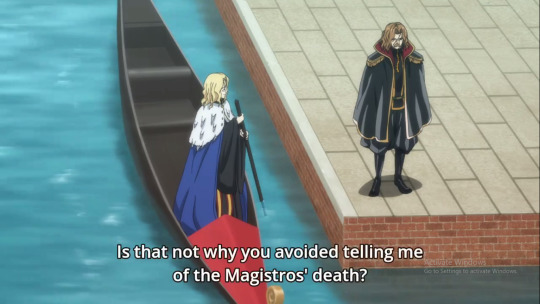
Um... I think this is not a matter of personal preferences anymore... do you really not trust each other that much??



....Who are you, and what have you done to Lucio?
11 notes
·
View notes
Note
Hey! What do you think of OPM season 2? I still love it & am looking forward to next weeks new episode but i just wish Saitama had more screen time ;-(
hey nonny~!
apologies for the late reply, its a combo of not getting notifications (tumblr u useless trashbucket) and being on surgery rotation (i miss sleeping so much)
firstly, i am truly glad you still love it and look forward to the new episodes!!! 💖💖💖please dont let anything i say from this point on dissuade you from that enjoyment
THAT BEING SAID
///cut for length
ive only watched up to the second episode, and i am having Such Difficulties convincing myself to keep watching. i know my rxns to ep 1 were overall pretty positive and I stand by it but the more i watch the more the Cringe/Hypercritique starts take over.
Turns out, the art style had a bigger impact than i thought on the length of which i enjoy shows. personally, i just really like when anime/shows have a happy marriage between writing and artwork. and when show directors know how to interpret writing, how to set up a scene (the angle, the music, the pacing), and then communicate with artists who have the skills to bring that idea to life using the medium they’re given -- that’s when writing becomes storytelling. OPM’s writing is still fantastic since they’re going off ONE (whereas GoT has the opposite problem where the production value is 4K and the writing is early 2000s livejournal/fanfiction lol god why is everyone dropping the ball in 2019??)
As for the art, since opm switched to jc staff and shingo natsume & co. left for other projects ( ;;_____;; im emo ), its inevitable we would see a drop in animation quality and i find myself constantly getting distracted by things i never used to get concerned about in the first season (bc of the high bar of expectations set by s1 artists/directors, like theres just no way jc staff would match up it to all of that and i feel bad for them, they’re trying their best but that doesn’t mean theyre immune to critique on the artistic liberties that they’ve taken that i feel as a viewer, may not have been the best choice?)
the shading: no, just, unnecessary and distracting and why is it the center of saitamas face, im by far no expert in lighting but a bish can tell something doesnt look right???
the shading pt II: color choices. just gonna say i was not expecting sai’s ‘hair shirt’ in ep 1 to be bright-ass neon green, it was a little jarring at first and i miss him in red ;-; i get hes supposed to have poor fashion choices but i dont see him as the type to pick something that stands out so much in the crowd, like he likes to be left alone. NEON doesnt really relay ‘hi dont mind me im just barely existing here lol’
the shading pt III: genos arms/neck. okaY so the bby looks good in screenshots. like he’s shiny and nice to look at when nothings moving. bUT this is animation?? movement of objections is different from still life manga so making every single scene almost 99% like murata’s panels translates a little awkwardly to the screen (like staff is lucky bc murata’s a force of nature with his panels playing out like a movie for ref). but when genos moves, the arms are just distracting bc everything around him is drawn simply without shadows so they stand out by themselves and i (visually) forget about the rest of him haha.
the pacing: it feels scripted, person A says this so we’ll show person A in the shot, then person B is saying something so we have to cut to person B, etc etc like keeping pretty steady to manga lines to the point where i was starting to get bored bc i knew what was coming. it was really intervaled? like someone had to be saying something at a certain effect and i think s1 had more dramatic pauses (lol) but thats how you can place emphasis on scenes to have an emotional impact if the character doesnt say anything and just let the soundtrack do some talking and the cadence of the script will change too (im 10000% talking about the sunset scene in s1 god bless. like it was slow, there was MOOD there wasn’t any rush and really gave the viewer time to think about the relationship between the two characters and what that moment meant to each of them) i feel like there were several scenes that could have been more like in the scene where sai protected fubuki, could have been a little more dramatically emphasized (aka just a pause) so the viewer could get a chance to understand that he purprosefully shielded her or when genos says that strong heroes are drawn to saitama--bUT nope its the same pace, like c l o c k w o r k just like my t eARS--
the fight scenes: how do i even start. the one scene that got me INTO opm (like watching the anime, reading the manga, drawing fanart, writing fanfic, reading fanfics etc) was kickstarted by the fight scene between genos and saitama in s1 that was circulating on tumblr a while back. i thought the characters were interesting and the fight was badass and it just looked SO COOL. (also the forehead flick at the end just kinda sealed my fate). going from that to s2 fight scenes where its mostly cut scenes and freeze scenes?? where theres a cut out behind the characters back?? during a fight scene????? this isn’t a calling card or an anime opening??? i dont understand. when they dont do cut scenes, its interesting but my initial impression is just underwhelmed. i can find good parts but it feels like i have to replay the scene to notice it? theres also an overwhelming amount of graphics/cgi manipulation that overpowers the actual art sometimes. its lacking some of the fluidity that comes from hand drawn fight scenes from first season. OTL
the sound directing: so i thought that the mood just felt off for certain scenes and the sound didn’t seem to support the scene as well (unless it was like the character’s theme or smtg) and i looked it up and the sound director was also replaced (Yoshikazu Iwanami replacing Shoji Hata). i have no idea if the sound director is also in charge of character lines but there were parts were fubuki was monologuing and i had no idea she was inner monologuing, i thought she was talking out loud and that just took extra effort on my part to re-orient myself (im nitpitcking i know but its just how i watch shows lol)
there are still some parts i like about the animation:
fubuki looks bangin and i love her👌👗
all of this just made me realize how insanely lucky we were to have an amazing s1 and just have it exist and how i really could not care less if they had just waited forever to make s2 as long as we had the same crew come back. but anime is still a business and the quicker they dish out merch/seasons, the more money they can bring in. which they do in the short run but they would bring in more if they spent a little more on quality in the long run and it becomes one of those classics that ppl will rewatch and keep recommending to ppl who want to get into anime and oh my god we’re never gonna have that now, are we. if im gonna rec it to a friend its gonna be ‘read the manga!’ or ‘just watch s1!’ uGH. its just an unfortunate situation, its not one person’s fault either, so many factors go into what made opm s1 so spectacular and seeing s2 just made me appreciate s1 more. i guess im happy to have a s2 regardless?
i’ll still watch to support (and bc i like suiryuu and wanna see sai in a karate gi and wig lol). maybe i just have to get used to the new style.
so in summary,

#this got outta hand real quicc#sorry nonny u really didnt ask for this😅😅😅#i just have paragraphs of emotions#my inbox is open hit me w discourse if u disagree lol#this is just imho#Anonymous
10 notes
·
View notes
Text
Sucker 3 Year Anniversary
Three years.
Three years is a long time.
I spent a couple weeks trying to think of what to say, to collect my thoughts. But I’m always blown away by the simple fact that I’ve been working on Sucker for three years now.
I had just started college back then. Was living in a dorm, and still had aspirations of becoming an illustrator or an animator back then. I had recently discovered the game watgbs, and was strangely drawn to it and its characters. I’m not usually the type of person to make fanart or fanfiction, although the mood does occasionally strike me.
When I first started this comic, it was by making a promise to myself. I wanted to make a long-form comic, all the way to completion. I wanted to prove to myself that I could do it, and thus even get some hefty practice in before I started making comics professionally. At 151 pages, it would be the longest comic I ever embarked to make for the general public. So far, I’ve completed 88 of those pages.
But it’s funny to look back on now. I’m glad I started making this comic, because I learned something very important. I don’t want to be an animator, or an illustrator. I’m ultimately not suited to either of those professions, even though I like to draw, because it’s not where my passion truly lies.
Making this comic taught me that I enjoy the process of storytelling and writing, regardless of what medium it’s done in. So in a way, the original purpose of this comic as practice for a future career has been rendered moot.
But I still don’t want to quit it, because I still enjoy the process, and value the promise I made to myself. Since the time I started this comic, back when I was a freshman in college and didn’t even have my license, I’m now in a completely different place. I’ve transferred colleges, got my driver’s license, and have now even graduated with my AA this past May. And I’ve kept making Sucker through it all.
In a way, I think I’m a bit of a strange person. I doubt I’m really continuing Sucker because I have that much devotion to the game.
But I like fixing things, is what I’ve discovered about myself. I like problem-solving and troubleshooting. I get a lot of inspiration for the original stories I work on based on the premise of me fixing some problem that I perceive. I think the same is probably true for Sucker, in that I like working on it because through it I’m able to fix some of the flaws I saw in the game.
Enjoyable game though it is, I think we can all agree that it had flaws, both in gameplay and story. For me, what ended up capturing my attention the most and becoming the center of my efforts was Fukami. He was a surprisingly delightful character whose personality came out in unexpected ways throughout the game. Most fascinating of all is that there exists a storyline where he gives in to his darker ambitions and betrays everyone.
More than anything, I wanted to explore him as a character, to dig deeper into who he is as a person and discover what could compel him to make the choices he does. I was a bit disappointed when the manga ended up not going any deeper into his motivations than “he likes her.” Like, we already knew that from the start, lmao. But as far as I’m concerned, that’s not a strong enough motivation, and doesn’t even explain why he likes her so much.
So I wanted to write a story that actually did that. That treated him properly like the more 3-dimensional character I know he can be. I wanted to dive into his psychology, and produce an answer that made sense, and give him a fully developed character arc in the process.
That, plus I kinda think he’s a better husbando for Wadda than Samekichi lmao.
That’s all well and good for me to say those things, but I’m sure that might be hard for the rest of you to believe. From your perspective, so far all we’ve done is retrace a lot of the same stuff from the game, with some new events and changes added in with more of a fukawada focus. But that’s also probably what’s motivating me.
Because the real meat of what I want from this comic, the exploration of who Fukami is as a person, doesn’t come until chapter 6. Five chapters of build-up it seems, just for it all to come spilling out at once during the climax and test his mettle. And I won’t be satisfied in the least until I get to that point. So I guess I’m sorry for the wait, and that we’ll have quite a ways to go still before I really dig into the meat of his character, from my own perspective.
Although it hasn’t all been build-up. Thus far the part of this comic that I’ve enjoyed the most has been chapter 4. That one’s gone the deepest into both Fukami and Wadanohara as characters so far, and thus has been the closest to my ultimate goal for the comic. My own explanation for why Fukami hates Samekichi so much, that I think goes a little further than him just being jealous. Not just jealous, but also angry and hurt for Wadda’s sake at how he keeps mistreating her. Or at least I hope that’s how it came across, haha. Hard to know how you guys saw that scene.
Anyway, I guess that’s all I have to say in celebration of the anniversary this year. At my current pace, I predict that I’ll probably be working on this comic still for another year, but not for another two years. That’s my hope, anyway.
I really love and appreciate that the comic’s gained its own little following, and that there are people who genuinely like it. I hope I continue to not disappoint you, because as far as I’m concerned, the best is yet to come.
Till then, thank you all for reading. See you next year.
12 notes
·
View notes
Photo

Beyond Light and Darkness, A Kathbute Anthology (Part 2)
Let me begin 2018 with an awesome review of our awesome book! I’m very proud of this – I was part of the new writer judging, the editing, and I wrote the preface! – and if you want to know this book’s journey from conception to publishing I wrote a lengthy blog on that last year.
In this second part of the #BLaD blog posts, I’ll be reviewing it as a reader and I’ll try to review it as objectively as I can. ;) Here’s what I think of the 11 stories by the Kathbute Authors, because while a general review of the book is appreciated, it always feels great for anthology authors to read about their works individually.

I. Love Bits
1. The Watch Repairman’s Son – H. Bentham
Prompts: A broken wristwatch, peppermints, and a hug that goes too far.
LOL at reviewing this objectively! XD This is my work and for me it’s the best! Hahaha!
Anyway, a trivia about this story: This is actually my first Sancho de Guerra story. I finished writing this almost a full year before “Guide for A Day” appeared in Summer Feels but this took a while to see the light of day. The town I envisioned here is a wee bit different from the one I imagined for the later story, but you wouldn’t really notice. All the bits that got published can go together, and as of this writing, I declare it as canon. ;)
2. Can I Stay? – Nigel Libranages
Prompts: Tarot Cards, the coming winter, a pair of old leather boots
This is more of a romantic fiction than romance but the feels, especially the melancholy, is on point. The tone seems levelheaded, but there’s something subtle in how it’s presented that tugs at the heartstrings just right. I must commend both the clever interpretation of the given prompts and the vivid visualization of the settings. Sandra’s characterization is also well fleshed out, justifying her decisions through the end of this short story.

II. Spell Crafts
3. Potion Lunacy – Irina Jean
Prompts: The first day of school, a love note, a recipe with a significant mistake
The YA Fantasy theme in this one is cute and reminds me so much of quirky 2000’s anime. Feisty Portia is stubborn but also a bit insecure and her love interest, Gelen, is just the right amount of clumsy and torpe to be endearing. The fun and fast-paced banter depicts the youthfulness of the characters accurately. And the magic parts, though light, are solid and well thought of.
4. Etienne and Amelie – Johanna Lee
Prompts: A supporting fairytale character, a lake, pretenses
This retelling of your favorite fairytales retains the fantastical magic of our childhood reads. I’m not going to say which tales get beautifully mashed-up because I think the figuring out is part of the story’s charm. The visualization and choice of words are commendable, as well as the surprising twist at the very end. You have to read this carefully. Blink, and you’ll miss it.
5. Man in Between – Trix Luna
Prompts: old train, jewels, an inconvenient truth
This story wasn’t in the original manuscript I got to read in the editing phase so reading it for the first time in the book is quite an experience. It is told in the second person POV, something I rarely get to read and the spec fic theme is also somewhat fresh to me. I don’t know how best to describe it without spoilers except that I thought it felt transcendental. The choice of words really got to me and it was…unsettling, in the way good fiction affects readers even after the story ends.

III. Distortions
6. The Time Banker – Raine Rillera
Prompts: A name, a prison cell, music
The sci-fi/spec fic concept for this one has been wonderfully executed, and the interpretation of the prompts, though subtle and downplayed, were key elements in the advancement plot. This is one of the stories chosen after our writing contest and I remembered that even the rough draft of this one was solid so the edited version in the print made for an awesome reread.
7. The Trial of the Tainted – Trix Luna
Prompts: A heroic villain, an old parchment, an unforgivable sin
Space and time-travelling were the themes of this interesting short story. I loved the world-building in this one and the twist and turns it took to get to that ‘heroic villain’ bit. There is also an underlying subtheme of a familiar story that everyone knows by now so the marriage of sci-fi elements to that story kind of updated the mysterious plot.
8. Word Wisp – AlaraChan IDA
Prompts: aerobics, a secret diary, something unpleasant under the bed
With prompts like those, familiar stories immediately come to mind about monsters and inner demons, yada, yada…but this interpretation of the boogeyman trope is fresh and brilliant. The monster here isn’t a thing, more of a concept, and it doesn’t kill, but rather consumes something everyone often takes for granted. I especially loved the world apocalypse scenes and the people’s reactions to it in this story’s universe.

IV. Penumbra
9. Allegro – RK Sanchez
Prompts: A name, a prison cell, music
Our cover artist also contributed a story here, and it is one on the darker themes. This time the mystery is more psychological and less fantastical but is just as interesting as all the other stories. The author takes a different turn with the interpretation of the prompts and offers a sweet twist toward the end.
10. Thirty-Seven – Yelle Felicenny
Prompts: A stolen ring, fear of spiders, a sinister stranger
This was one of my anticipated reads in this book because I only got to read the first part during the editing phase. There’s a bit of action, adventure and mystery here but what really got me was the dark turn of events at about the final quarter of the story.
11. Darker Than Night- AlaraChan IDA
Prompts: a campfire, a scream, a small lie that gets bigger and bigger
This is uniquely written in epistolary style/journal entries, and is a dark but captivating read. I don’t read a lot of horror stories (everyone knows I’m a coward, lol) but I couldn’t put this down! I wanted to know what happens to the aswang and the military party that’s pursuing it!
5 of 5 Stars. Because I’m super proud of our work, and it is an honor to have worked on this with awesome writers and awesome people!
Blurb:
The 11 stories in this anthology showcase the interpretations of the Kathbute writers to the theme of light and darkness in the genres of Romance, Fantasy, Science Fiction, and Mystery.
Buy Links:
Right now it’s only available in print here: bit.ly/BLADBatch2
I’ll update this when the Kindle version is released. J
For the meantime, put it in your GoodReads TBR shelf? https://www.goodreads.com/book/show/36995364-beyond-light-and-darkness-a-kathbute-anthology
About the authors:
Nigel Libranages
Nigel Libranages is a licensed chemist but dreams of becoming a marine biologist and take care of sea turtles. Born as a genuine sinker, the closest that he can do about his dream is own an aquarium. He has pitcher plants for pets, and he loves reading about myths and folklore. He writes before he forgets. Dedication: To those who are strong enough to hold on, and brave enough to let go.
Wattpad: @libranages
Raine Rillera
Born and raised in Baguio City, Raine has a natural affinity to cold weather and “vintage” clothing (i.e. ukay). Her first paying job was as a puppeteer, when at 8 years old she staged her own puppet show at a birthday party. Since then, she has been telling stories through whatever medium was available.
Wattpad: @purple_porpoise
H. Bentham
H. Bentham was born and raised in the Philippines but now resides 1,481 miles away from home. He battles homesickness with his various hobbies and (mostly) procrastinating on the internet. When he's done being bored, he writes stories; and when he's feeling particularly profound, poems. He adores turtles and bettas, enjoying the slow, quiet companionship they provide.
Wattpad: @bentchbites|Facebook: H Bentham Writes |
Twitter: @bentchbites| Instagram: @bentchbites
Irina Jean
Irina Jean is an elusive mushroom who indulges in anime, manga, video games, and most of all, art. She believes that writing is a unique form of art too, for she can express herself with words as her paint and her laptop as her canvas. When she's not writing, she's usually binge-gaming with friends. She dreams of being a webcomic artist and, if possible, a space witch. (Actually, any kind of witch would do.)
Wattpad: @Cygneux|Facebook: Irina Jean
Trix Luna
Trix is the self-proclaimed duchess of the East of the Sun and West of the Moon, a place where there is always light when you need it. She’s still waiting for her Hogwarts acceptance letter even though she is already sorted to Ravenclaw. She’s not adept at any game ending in –ball (basketball, football, volleyball, etc.) other than Quidditch and Scrabble. She has a one-sided relationship with music and strongly opposes to divorce with it, believing that music will learn to love her singing voice…eventually.
Wattpad: @lunatrix|Facebook: Trix Luna | Twitter: @3xLuna
AlaraChan IDA
AlaraChan IDA is a kabute who like books, cats, and hot chocolate. She takes long quiet walks, bike rides, and binge-watching a number of TV series to keep her muse alive and kicking. She dreams of becoming a pod racer, a dragon-tamer, and a space pirate. She recently took up watercolor painting and is now torn between writing and the arts.
Wattpad: @AlaraChan| Instagram: @alara_arts
Johanna Lee
Johanna Lee is a Filipino writer based in Western Australia who writes poetry, and fictional stories in the genre of Chicklit, Romance, and Paranormal. A published Tagalog Romance author, Radish Fiction writer, and a Children’s-storyteller-wannabe. She finds joy in her collection of toys, books, stationery, and old-fashioned writing tools.
Twitter: @ilivewritenow| Instagram: @ilivewritenow
Yelle Felicenny
Felicenny is an awkward melange of multiple extremes: an artist hemmed in a thriving tycoon’s body. While business is her field of study and training remote communities is her passion in public service, her heart belongs to art, poetry and travelling. Bus rides, sunsets and coffee shops are among her favorite things, for the untamed muse beckons the most - inked on bus tickets, receipts and table napkins.
Wattpad: @Felicenny| Facebook: Yelle Felicenny
R.K. Sanchez
R.K. Sanchez is a teacher by profession, but is fond of learning a lot of things from her students. Her hands are often dirty as she is a right-handed artist and guitarist, often having guitar string marks on her left hand fingertips and paint stains all over her right hand. She is an introvert who has always been afraid of meeting and approaching new people, but never afraid of approaching stray cats and dogs.
Wattpad : @PrivateHeroine| | Facebook: Skribsinner |
Instagram: @skribsinner
1 note
·
View note
Text
Winter Anime Final Impressions
I was supposed to do this like two weeks ago but with Gundam ending so late and me getting swept up with many things, I didn’t have the time, but here’s a quick rundown of the best and worst of the Winter season. I’m gong from best to worst and also since I watched very few shows this season, I ‘m not gonna break them down in best/meh/worst
Showa Genroku Rakugo Shinjuu: Sukeroku Futatabi-hen
A masterpiece to the very end, as heartbreaking as it was full of joy and love. There was this weird insinuation at the end that didn’t sit well with me at all and I’m not sure why they felt the need to do it, but I can overlook it because the rest of the picture is so wonderful and special and heart-wrenching. When Konatsu asked Yakumo to make her his apprentice, I actually cried. What a beautiful show. Don’t let the obscure antique Japanese art keep you from experiencing one of the best anime of this decade.

Ao no Exorcist: Kyoto-hen
I was a bit worried about this one because lately, when an “old” show gets a sequel many years after it last aired, said sequel turns out underwhelming and poorly done. See D.Grayman HALLOW (which also adapted my favorite arc from that manga) and Berserk (production values aside, the decline of this is due to Miura’s gross storytelling, so I guess it was inevitable). But I was more than surprised and ecstatic to see this rendition of the Kyoto arc did justice on the source material, with excellent production values, a good pace and wonderful emotional and action scenes alike. AoEx is one of the finest examples of the battle shonen genre and that translated wonderfully to this new iteration of the anime. I can only hope we’ll see Izumo’s and Shura’s arc eventually too.

ACCA-13-ku Kansatsuka
I was a Little on the fence on this one at the start, but once they laid down all the cards and tied all the loose threads, it became absolutely amazing. I’m sorry I ever doubted you Natsume Ono, your ability to craft smart and fascinating adult stories shall never be questioned again. Definitely worth checking out if you want to try something different to your usual anime genres. Helps that the visuals are really interesting and that Mauve is such a bae. I still feel Jean was the weakest link with his absolute nonchalance, but even that somehow worked at the end. Definitely worth going through the somewhat slow initial episodes.

Yowamushi Pedal: New Generation
NGL i’m not a fan of Kaburagi, he’s so much like Naruko I don’t feel he adds anything to the team. But this is now officially the Teshima show and that compensates for the snooze that is Kaburagi because Teshima has become so fabulous and cool I’m just excited every week to see what he’ll do next. Also the First-year race was a true highlight and I’m very disappointed Sugimoto didn’t make the cut, they did a fantastic job in making him likable, so it was sad to see him lose. Hopefully he’ll get to assist Imaizumi when they’re 3rd years.

Little Witch Academia
This show’s a lot of fun, with really sweet animation and it also sports the Best Girl of the season, Sucy Manbavaaran, although I gotta say there were a bit too many fillerish episodes and it was frustrating to see them take so long to get the plot going. I’m not hating on the show, it is in fact extremely entertaining, but it’s a little lacking on the plot department. Hopefully we’ll get more of that on the second cour.

Classicaloid
I’ve never been happier of not quitting a show as I am about Classicaloid. By episode 3 I was on the verge of giving up because it wasn’t what I had expected, but I kept going and I ended falling so hard in love with this show I’m ecstatic it’s getting a second season. Once I embraced the absurdity, it became the best comedy of the season, and I honestly would watch Schubert’s fishy misadventures for 52 weeks a year. It’s an acquired taste for sure and not easy to recommend, but if you’re willing to let go of all reason, you’re sure to have a good time.
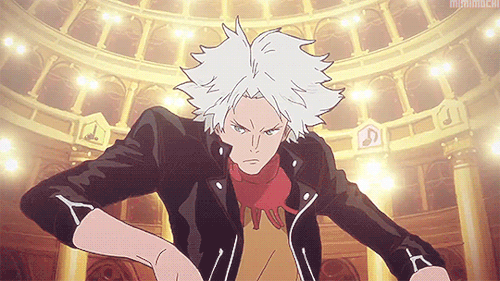
All Out!!
I have a lot of love for this show and its characters (and Sekizan’s ridiculous hair), but I’m afraid the pacing they chose basically doomed them because with the abysmal sales, it seems unlikely we’ll ever see a second season and therefore we’ll never get to see if Jinko does get to Hanazono. It’s a perfectly competent sports series, that does a really good job of developing its huge cast, definitely much better than the likes of Prince of Stride or DAYS, but its inconclusive ending is quite frustrating. I really do hope we get to see more of these boys, but Madhouse’s never been all that good with the whole getting-sequels-done so…
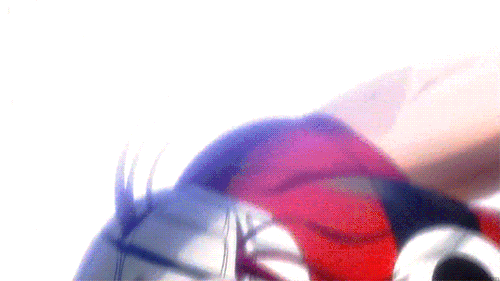
Kuzu no Honkai
In spite of its low ranking, this is actually a really good show and a unique take on teenage female sexuality that you wouldn’t normally see in this mostly sexist medium. Hanabi made for a truly interesting protagonist and I liked seeing her explore herself and her relationships. I was however quite disappointed by how little focus we actually had for Hanabi and Mugi’s relationship. I felt there was more telling than showing in that regard, especially in the latter half of the show. The ending was pretty good and mature in spite of everything, and as always, I’m just really fond of all the vaginal imagery in the ED animation. Could’ve done without Moca though.

Gundam: Tekketsu Orphans
At the end of the Fall season, I expressed my concern about pointless, meaningless deaths. Clearly the Gundam writers thought I wasn’t concerned enough because the amount of characters that died pointless deaths went on to, I think, the double digits. I wouldn’t have minded the carnage if there had been some sort of payoff to the sacrifices. For example, if Shino hadn’t stupidly and conveniently missed his one shot because the show couldn’t afford to kill Rustal yet. I always felt Orga, Mika and Akihiro had a ton of death flags looming over their heads, but I certainly didn’t expect all three of them to get to the chopping block. Orga’s death was particularly random and pointless, but then again, what they did with Orga in general was very confusing. That he agreed to McGillis’s sketchy propositions to become “king of Mars” never made a whole lot of sense to me and that’s the result we got. I’ll also never get over how creepy and weird the whole Atra giving Mika a baby thing was. In short, I have very mixed feelings about it.

Hand Shakers
I could write thousands of words for everything that was wrong with this series but I think it wouldn’t make justice to the absolute experience that is watching this amazing trainwreck. Go watch it to see a masterclass of how not to anime. Honestly I had such a good time hating this show, it was so horrible in every possible way. Good job GoHands, even animate, who sponsored this show, won’t give it any publicity.
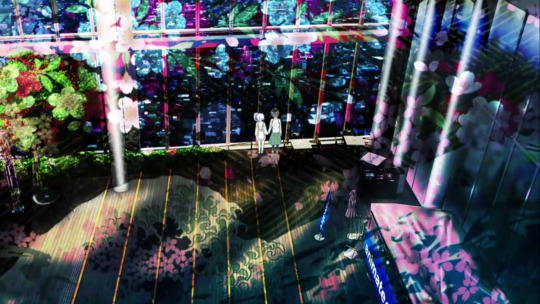
Super Lovers
I’m not sure of how this production team managed to put out 20 episodes of nothing actually happen. Like you just have to give kudos to the writers for managing to simply not do anything over the course of 6~ hours of content. No drama, no decent comedy, no character development, not even relationship development in a BL romance. It’s kind of amazing how pointless the whole thing is. The dog’s still cute and the relationship is still creepy and gross and that’s about all there is to say about this.
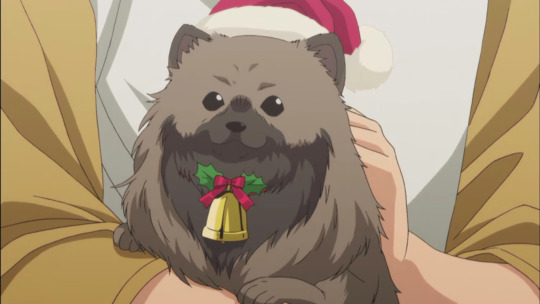
Although most of the shows I watched turned out great, it did feel like a weaker season because there wasn’t that much that was interesting (my Wednesdays were literally empty). Or maybe everything looks lackluster in this post-Yuri on Ice world D: But there was Rakugo and rakugo is good and I’m glad we live in an age in which such a niche, quiet and adult artistic show could be made and tell a complete story.
#winter anime#winter last impressions#final impressions#showa genroku rakugo shinju#ao no exorcist#acca 13-ku kansatsu-ka#yowapeda#little witch academia#classicaloid#all out!!#kuzu no honkai#gundam iron blooded orphans#hand shakers#super lovers#100#200#300
442 notes
·
View notes
Text
Best of 2016
Another summer, another way-too-late best-of post.
10: Girlish Number ∥ Diomedea ∥ Dir. Ibata Shouta: Obviously, Girlish Number gets significant bonus points for being an anime about the seiyuu industry, something I'm heavily invested in. Watari Wataru's cynical but ultimately inspiring look at this girls trying their best seems a more fitting tack than Sore ga Seiyuu!'s when dealing with what we all know is frankly a borderline "black kigyou". I can't think of a better face for this industry than the solely self-interested and delusional Chii-sama. Industry commentary aside, Girlish Number also functions as a perfectly good coming-of-age series of sorts, as Chitose and her castmates slowly come to terms with the roles they've come to play in the industry (no pun intended) while supporting each other.
9: Kuromukuro ∥ P.A. Works ∥ Dir. Okamura Tensai: I didn't have very high expectations coming into Kuromukuro. It's a robot anime with copious CG animation, and the Okamura Tensai anime I've seen recently have all been solid but never amazing. Kuromukuro, though, ends up being a testament to the importance of execution. A cast of lovable characters (including the main lead!) with solidly-written relationships and pitch-perfect direction carries what would otherwise be a merely passable-at-best science fiction story to the height of being one of the best series of the year. It helps that it's a two cours series, which gives the characters time to breathe without constantly being shoved out of the way to deal with the encroaching danger in the plot. It also features one of the most satisfying endings I've ever seen in an anime, which is a medium not known for great endings, much less satisfying ones.
8: Netoge no Yome wa Onna no Ko Janai to Omotta? ∥ project No.9 ∥ Dir. Yanagi Shinsuke: Man, was I ready for spaghetti when I first read the title of this show. MMO-based light novel anime are a dime a dozen nowadays, but Netoge Yome ends up distinguishing itself from the pack because of what it's not. Unlike most MMO-based stories, the game really isn't that important (except to Ako), you don't die in real life if you die in the game, and there's not really any philosophizing about the nature of reality in a fictional world... It's just a story about some dorky friends playing a video game, and I love it for that. The friend group depicted here actually makes me feel nostalgic for my high school days of playing video games day-in and day-out, and I think the show will do the same for a lot of people. Of course, most of us didn't have an angel like Ako in our friend group, but no one's life is perfect.
7: Amanchu! ∥ J.C.Staff ∥ Dir. Satou Junichi: Undoubtedly the most healing anime of the year. ARIA is one of my favorite series of all time, and Amanchu! reunited Satou Junichi (the king of healing anime himself) with an Amano Kozue original work and it's every bit as wonderful as you would imagine. If you've seen ARIA you know exactly what you're in for here: cute girls forging cute friendships at as slow a pace as possible. The scuba diving stuff is interesting but ultimately inconsequential; this show is all about the atmosphere and the comfortable feeling of slowly passing the time with friends. Also, Teko is angel.
6: NEW GAME! ∥ Douga Koubou ∥ Dir. Fujiwara Yoshiyuki: Gambaru zoi! NEW GAME! combines the best of a Kirara anime's trademark cute girls doing cute things style with a premise straight out of one of P.A. Works' working women series to create one of the more unique series that has come out of that venerable magazine. The author of the original manga formerly worked in game development, so on top of the cute girls it also offers an (adorable!) look at what it's like to be an (adorably!) exploited artist in Japanese corporate culture. No one is really here for the social commentary, but it does add an interesting additional layer to the show. More importantly, all the girls are angelic. Between this and Mideshi, Douga Koubou's Fujiwara Yoshiyuki is rapidly proving himself one of the best directors of cute-girls-doing-cute-things anime.
5: Re:Zero kara Hajimeru Isekai Seikatsu ∥ White Fox ∥ Dir. Watanabe Masaharu: This was undoubtedly the biggest event anime of the year, at least among series I watched. The plot and pacing took me back to the likes of Code Geass, another show where week-to-week you're simply riveted to the screen just to see what kind of crazy twist the show will throw at you next. The show is a bit of a rollercoaster ride, not just emotionally but also in its highs and lows. If every episode were as good as episodes 18-19, this would undoubtedly be my show of the year, but it struggles to carry that momentum through to the end. Still, Re:Zero offers one of the most compelling protagonists of the year in the detestable yet somehow still heroic Natsuki Subaru, who is almost too relatable in his sad and pathetic existence.
4: Kono Subarashii Sekai ni Shukufuku wo! ∥ Studio Deen ∥ Dir. Kanasaki Takaomi: It seems fitting that Konosuba is sandwiched between two isekai anime; this show, a hilarious send-up of the genre, came at exactly the right time. Satou Kazuma is also a wholly self-interested loser trapped in a fantasy world with nothing but his own delusions of grandeur. The difference is that when his life falls apart, it's just funny. The cast of female heroines, all uniquely "dame", are what really make this show shine. The voice acting is some of my favorite of the year: Amamiya Sora is brilliantly pathetic as Aqua and Fukushima Jun is a perfect foil to her, while you've also got Kayanon being made to say lewd things and Rieri playing a deadpan loli. This A+ cast is gifted with some of the sharpest comedic wit this year, both in script and in what I'm sure is a healthy heaping of ad-lib. I read the source novel recently and the anime is honestly much funnier, probably due to the quality of the acting.
3: Hai to Gensou no Grimgar ∥ A-1 Pictures ∥ Dir. Nakamura Ryousuke: I almost forgot this show aired this past year, since it was way back in Winter. Grimgar is undoubtedly one of the most unique (and one of the best) isekai fantasy anime that has been produced in recent years. Dark without ever being brooding, Grimgar is an at times sobering look at life in a hostile and brutal world. It has the trappings of power fantasy insert isekai stories, but none of our protagonists here are heroes: they're just people in extraordinary circumstances fighting to stay alive and make a place in the world. For a show that spends a lot of time on the moral justification (or lack thereof) for killing goblins, this show probably speaks more to young people in the modern world than anything else that aired this year. There's a level of accomplishment in writing here that is rarely seen in this medium.
2: Occultic;Nine ∥ A-1 Pictures ∥ Dir. Ishiguro Kyouhei: I never thought I'd see the day that a semicolon anime ends up this high on my year-end list, but Occultic;Nine is a masterpiece. The show is an exercise in how manically you can tell your story without losing your viewers, and the result is a bewildering web of interlinking characters and plots to which one has to hang on to for dear life as they're whipped from twist to twist to yet another twist. It's fitting that this is based on Shikura's first paper novel, because like a great novel it's the kind of story that should really shine on the second and third viewing. Watching this show. I felt at times like I wanted to take notes in the margin to keep from getting lost. With lesser execution, the sci-fi story here would probably come across as nothing more than stupid, but the audiovisual ringer that this show puts you through really makes for a unique and memorable viewing experience.
1: Flip Flappers ∥ Studio 3Hz ∥ Dir. Oshiyama Kiyotaka: Speaking of audiovisual experiences... I waffled on whether I really should make Flip Flappers my anime of the year because of how the story falls apart towards the end, but just the first six episodes of this show outdoes anything else that aired this year. It's the purest anime ('Pure Illusion' pun not intended) I've seen in a long time: each episode is an adventure of creativity in visual storytelling. Color pallets and art styles change, we find ourselves in different genres and different styles of storytelling, and through it all we're treated to some of the most inspired art direction and most skillfully put together animation of the year. Individual episodes of this show put entire other series to shame; there's enough creative juice flowing here to fuel another ten single-cours anime. Yes, the story after Ayana Yuniko left the project leaves much to be desired, but if you're picking an anime of the year, nothing this year embodied the spirit of animation quite like Flip Flappers.
Then there's the shows that didn't make the top ten...
There are a couple of non-full-length shows that didn't make it into the above top ten. Uchuu Patrol Luluko is peak Trigger, and if you're a fan of any their previous works you'll find plenty to love here. Really, it's just pure Trigger fanservice. Inferno Cop even makes a cameo. Oshiete! Gyaruko-chan is probably my favorite show that didn't make the list. It has that choice feel animation but more importantly is a surprisingly frank depiction of high school girls talking about their bodies, and in a way that actually isn't weirdly sexualized. I guess you could still get turned on hearing Gyaruko talk about inverted nipples and periods though.
In a year where we got Amanchu!, it's a little overshadowed, but Flying Witch was a wonderful return to form for the healing anime archetype, and was one of the most comfy shows of the year. orange was an example of a teen drama done right, with a remarkably good depiction of depression and very strongly performed characters by an all-star cast. Finally, planetarian deserves some recognition simply for being the only Key anime I think is good. It's short, sweet and to the point. CLANG CLANG.
And the awards go to:
Best Actress: Amamiya Sora as Aqua, Kono Subarashii Sekai ni Shukufuku wo! Konosuba is one of the funniest anime in recent memory and as I mentioned in the top ten, a large part of that is due to magnificent performances from the voice cast. For me, "Ten-chan" is the best of the bunch as Aqua, whose moronic-sounding nasal voice is perfect for the arrogant and incompetent damegami, and the vocal gymnastics she does when Aqua goes into a screaming fit never cease to make me bust a gut.
(Honorable mention: Minase Inori as Rem, Re:Zero kara Hajimeru Isekai Seikatsu. I actually wrote an entire paragraph for this before remembering Konosuba was also last year. The most memorable single episode last year in terms of acting was the ep of Re:Zero where Rem monologues to Subaru for 24 minutes, and that's all thanks to Inosuke's great performance; Kurosawa Tomoyo as Oumae Kumiko, Hibike! Euphonium 2; Kakuma Ai as Kurihara Yuki, Momokuri)
Best Actor: Kobayashi Yuusuke as Natsuki Subaru, Re:Zero kara Hajimeru Isekai Seikatsu. I don't know w hy everyone hates Subaru when he's one of the most compelling male protagonists in LN anime history. I've gone into depth on why Subaru is so great before, but Kobayashi deserves credit for giving him the humanity that makes him so despicable and pitiable at the same time. This role is an emotional rollercoaster and Kobayashi delivers both the comedic highs and the soul-wrenching lows as well as anyone could.
(Honorable mention: Fukushima Jun as Satou Kazuma, Kono Subarashii Sekai ni Shukufuku wo!; Kaji Yuuki as Gamon Yuuta, Occultic;Nine; Yamashita Seiichirou as Naruse Kakeru, orange)
Best Director: Ishiguro Kyouhei. A couple years ago this man delivered us Shigatsu wa Kimi no Uso, one of the best seishun dramas of all time, and now he's given us Occultic;Nine, the show that finally made semicolon anime good. Occultic;Nine is unlike anything else I've seen, with manic pacing and some truly adventurous camerawork, which is something I don't know I've ever singled an anime out for before. Occultic;Nine is a shock to the senses both visually and auditorily and you couldn't ask for a more quality production.
(Honorable mention: Oshiyama Kiyotaka, who directed Flip Flappers. This was his directorial debut, so we'll need to see more of his work before we can say for sure, and he was most intimately involved with the worst episodes of the show (the end) but he should get some credit for directing the anime of the year.)
Best Animation: Flip Flappers, by Studio 3Hz. Their debut work, Sora no Method, may have been a flop but 3Hz came back and delivered the most visually striking show of the year with Flip Flappers.
Newcomer Seiyuu of the Year: Hanamori Yumiri. For someone with as cute a voice as she does, Hanabee doesn't get nearly enough work, but what she lacks in quantity she makes up in quality. Her first major role was Uritan in Etotama in 2015, which quickly put her on my radar. Recently, she played the leads in both Anhapi and Shakunetsu no Takkyuu Musume, which showed she could carry a show emotionally as well as being adorable. And recently, although it's out of the scope of this awards post, she showed she has dramatic chops as well with a great performance as Zero in the otherwise terrible adaptation of Zero Kara Hajimeru Mahou no Sho. This is a character I had imagined as Ayaneru, mind you, so the fact that I have no complaints about Hanabee's portrayal -- she plays it just as I thought Ayaneru would play it -- is high praise indeed. Hopefully she'll get more work going forward so we can see how wide her range really is.
0 notes